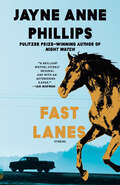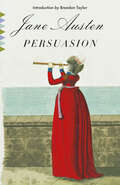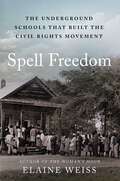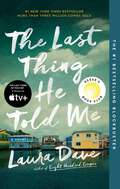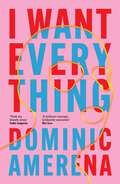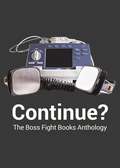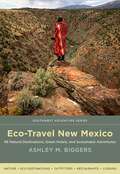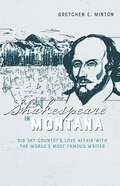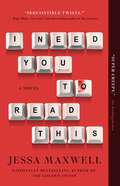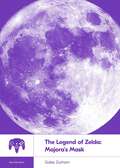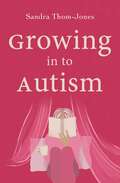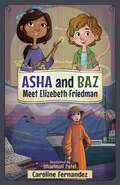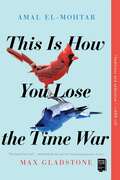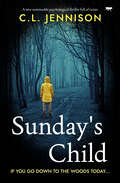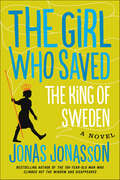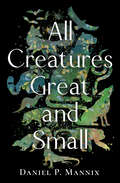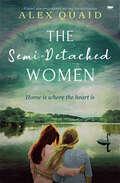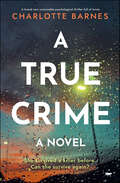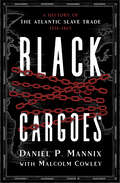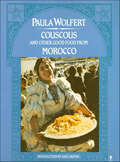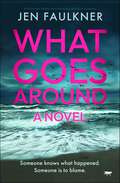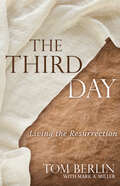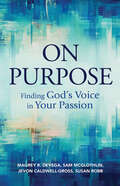- Table View
- List View
Fast Lanes (Vintage Contemporaries)
by Jayne Anne PhillipsFrom the Pulitzer Prize-winning author of Night Watch: a short story collection that presents a tour de force of voices, offering elegantly rendered views into the lives of characters torn between the liberation of detachment and the desire to connect."A brilliant writer, utterly original and with an astonishing range." —Ian McEwan, New York Times bestselling author of Atonement and Lessons Three stories are collected in this edition for the first time: in "Alma," and adolescent daughter is made the confidante of her lonely mother; "Counting" traces the history of a dommed love affair; and "Callie" evokes memories of the haunting death of a child in 1920's West Virginia. Along with the original seven stories from Fast Lanes—each told in extraordinary first person narratives that have been hailed by critics as virtuoso performances—these incandescent portraits offer windows into the lives of an entire generation of Americans, demonstrating again and again why Jayne Anne Phillips remains one of our most powerful writers.
Persuasion: A Novel (Vintage Classics)
by Jane AustenOf all Jane Austen&’s great and delightful novels, Persuasion—the story of a second chance at true love—is widely regarded as the most moving.With a new introduction by Brandon Taylor.Anne Elliot, daughter of the snobbish Sir Walter Elliot, is woman of quiet charm and deep feelings. When she was nineteen she fell in love with—and was engaged to—a naval officer, the fearless and headstrong Captain Wentworth. But the young man had no fortune, and Anne allowed herself to be persuaded to give him up. Now, eight years later, Wentworth has returned to the neighborhood, a rich man and still unwed. Anne&’s never-diminished love is muffled by her pride, and he seems cold and unforgiving. What happens as the two are thrown together in the social world of Bath—and as an eager new suitor appears for Anne—is touchingly and wittily told in Persuasion, a masterpiece that is also one of the most entrancing novels in the English language.
Spell Freedom: The Underground Schools That Built the Civil Rights Movement
by Elaine WeissThe acclaimed author of the &“stirring, definitive, and engrossing&” (NPR) The Woman&’s Hour returns with the story of four activists whose audacious plan to restore voting rights to Black Americans laid the groundwork for the Civil Rights Movement. In the summer of 1954, educator Septima Clark and small businessman Esau Jenkins travelled to rural Tennessee&’s Highlander Folk School, an interracial training center for social change founded by Myles Horton, a white southerner with roots in the labor movement. There, the trio united behind a shared mission: preparing Black southerners to pass the daunting Jim Crow era voter registration literacy tests that were designed to disenfranchise them. Together with beautician-turned-teacher Bernice Robinson, they launched the underground Citizenship Schools project, which began with a single makeshift classroom hidden in the back of a rural grocery store. By the time the Voting Rights Act was signed into law in 1965, the secretive undertaking had established more than nine hundred citizenship schools across the South, preparing tens of thousands of Black citizens to read and write, demand their rights—and vote. Simultaneously, it nurtured a generation of activists—many of them women—trained in community organizing, political citizenship, and tactics of resistance and struggle who became the grassroots foundation of the Civil Rights Movement. Dr. King called Septima Clark, &“Mother of the Movement.&” In the vein of Hidden Figures and Devil in the Grove, Spell Freedom is both a riveting, crucially important lens onto our past, and a deeply moving story for our present.
The Last Thing He Told Me: A Reese Witherspoon Book Club Pick
by Laura DaveA Goodreads Top 60 Book of the Last 5 Years Don&’t miss the #1 New York Times bestselling blockbuster and Reese Witherspoon Book Club Pick that&’s sold over 3 million copies—now streaming on Apple TV+ starring Jennifer Garner! The &“page-turning, exhilarating&” (PopSugar) and &“heartfelt thriller&” (Real Simple) about a woman who thinks she&’s found the love of her life—until he disappears.Before Owen Michaels disappears, he smuggles a note to his beloved wife of one year: Protect her. Despite her confusion and fear, Hannah Hall knows exactly to whom the note refers—Owen&’s sixteen-year-old daughter, Bailey. Bailey, who lost her mother tragically as a child. Bailey, who wants absolutely nothing to do with her new stepmother. As Hannah&’s increasingly desperate calls to Owen go unanswered, as the FBI arrests Owen&’s boss, as a US marshal and federal agents arrive at her Sausalito home unannounced, Hannah quickly realizes her husband isn&’t who he said he was. And that Bailey just may hold the key to figuring out Owen&’s true identity—and why he really disappeared. Hannah and Bailey set out to discover the truth. But as they start putting together the pieces of Owen&’s past, they soon realize they&’re also building a new future—one neither of them could have anticipated. With its breakneck pacing, dizzying plot twists, and evocative family drama, The Last Thing He Told Me is a &“page-turning, exhilarating, and unforgettable&” (PopSugar) suspense novel.
I Want Everything
by Dominic AmerenaIt starts with a lie. One small lie to get everything he wants. But one lie leads to another, and another. Caught in his own web of deception, how can he recognise the truth? And what is it going to cost him? The legendary career of reclusive cult author Brenda Shales remains one of Australia&’s last unsolved literary mysteries. Her books took the world by storm before she disappeared from the public eye after a mysterious plagiarism case. But when an ambitious young writer stumbles across Brenda at a Melbourne pool, he realises the scoop of a lifetime is floating in front of him: the truth behind why she vanished without a trace. The only problem? He must pretend to be someone he&’s not to trick the story out of her. One innocent lie leads to a slew that are definitively not, as Brenda reveals the strange and troubling truth of where her books came from. Yet the more the author unravels about Brenda&’s past, the more he begins to question whether Brenda is a reliable narrator. Is she spilling secrets or spinning tales? Is she, like him, little more than a talented thief? To write the book that will make his name, he must balance his ethics and ambition and decide what he&’s willing to sacrifice to become the next great Australian writer. This astonishing debut, full of delicious twists and wicked insights, is a dazzling novel of desire and deception, authorship and authenticity, and the costs of creative ambition. 'A brilliant concept, brilliantly executed.' Bri Lee 'That rare thing, a great contemporary novel.' Lauren Oyler &‘It's rare for a writer to be this good both at crafting a sentence and at making you want to read the next one.&’ Naoise Dolan &‘I Want Everything is a book about literature that feels like a bank heist. I loved it!&’ Rita Bullwinkel &‘A dazzling debut … I Want Everything is a playful, delicious tale of deception that speaks to the human cost of fulfilling naked ambition.&’ The Guardian &‘The hype around I Want Everything is richly deserved. This is not just a hot debut novel, but a modern Australian classic …&’ The Australian &‘A sharp-tongued literary caper, all pith and vinegar … Amerena dares us to giggle while he rubs salt into the Ozlit wounds&’ The Monthly &‘A twisty, faced-paced narrative and deftly playful language …&’ ArtsHub &‘A tantalising debut … Delectably deceptive and metafictive&’ Books + Publishing
Continue?: The Boss Fight Books Anthology (Boss Fight Books)
by Boss Fight BooksBoss Fight is proud to present our first multi-author collection, Continue? The Boss Fight Books Anthology. In these digital pages, Anna Anthropy celebrates her second favorite Epic MegaGames title, David LeGault offers a tour of the lost 80s Action Max console, and Mike Meginnis tells his Best American Short Stories-selected tale of a father and son who become obsessed with the saddest adventure game in the world. The eBook collects a diverse survey of essays and short stories from Boss Fight series authors Michael P. Williams, Ken Baumann, Jon Irwin, and Darius Kazemi, as well newcomers Matt Bell, Tevis Thompson, Rebekah Frumkin, Brian Oliu, Salvatore Pane, Mike Lars White, and Rachel B. Glaser.
Eco-Travel New Mexico: 86 Natural Destinations, Green Hotels, and Sustainable Adventures (Southwest Adventure Series)
by Ashley M. BiggersEco-Travel New Mexico is the essential take-along companion to sustainable travel in New Mexico, on the main trails and off the beaten path. Ashley M. Biggers&’s guide delves into the heart of this enchanting land—from stunning natural landscapes to vital cultural areas that give New Mexico its distinctive character. With handy insider tips and insights, the guide takes travelers to eco-friendly destinations, farm-to-table restaurants, and green hotels and introduces them to sustainable outfitters. Complete with recommended hikes and camping areas, Eco-Travel New Mexico gives travelers the tools they need to authentically and responsibly explore their environment.
Shakespeare in Montana: Big Sky Country's Love Affair with the World's Most Famous Writer
by Gretchen E. MintonTracing more than two centuries of history, Shakespeare in Montana uncovers a vast array of different voices that capture the state&’s love affair with the world&’s most famous writer. From mountain men, pioneers, and itinerant acting companies in mining camps to women&’s clubs at the turn of the twentieth century and the contemporary popularity of Shakespeare in the Parks throughout Montana, the book chronicles the stories of residents across this incredible western state who have been attracted to the words and works of Shakespeare. Minton explores this unique relationship found in the Treasure State and provides considerable insight into the myriad places and times in which Shakespeare&’s words have been heard and discussed. By revealing what Shakespeare has meant to the people of Montana, Minton offers us a better understanding of the state&’s citizens and history while providing a key perspective on Shakespeare&’s enduring global influence.
I Need You to Read This: A Novel
by Jessa MaxwellThis &“super creepy&” (The Washington Post) and &“perfectly plotted whodunnit&” (Katy Hays, New York Times bestselling author) follows an advice columnist searching for answers about her predecessor&’s murder—from the bestselling author of The Golden Spoon. Years ago, Alex Marks escaped to New York City for a fresh start. Now, aside from trips to her regular diner for coffee, she keeps to herself, gets her perfectly normal copywriting job done, and doesn&’t date. Her quiet world is upended when her childhood hero, Francis Keen, is brutally murdered. Francis was the woman behind the famous advice column, Dear Constance, and her words helped Alex through some of her darkest times. When Alex sees an advertisement searching for her replacement, she impulsively applies, never expecting to get the job. Against all odds, Alex is given the position but soon, she begins to receive strange, potentially threatening letters at the office. Francis&’s murderer was never identified, turning everyone around her into a threat. Including her boss, editor-in-chief Howard Dimitri, who has a habit of staying late at the office and drinking too much. As Alex is drawn into the details surrounding her predecessor&’s murder, her own dark secrets begin to rise to the surface and she suddenly finds herself trapped in a dangerous game of cat and mouse that takes her all the way from the power centers of Manhattan to Francis Keen&’s summer house, where her body was found and where the killer may just be waiting for her in this &“fresh and fascinating&” (Megan Collins, author of The Family Plot) page-turner.
The Legend of Zelda: Majora's Mask (Boss Fight Books)
by Gabe DurhamYou&’ve met with a terrible fate, haven&’t you? Those grim words hang over the entirety of Majora Mask, the sixth entry in the Legend of Zelda series. In his darkest adventure, Link must relive the same three days over and over again to prevent the moon from colliding into the kingdom of Termina and ending the world. Made with a small team in a single year for the Nintendo 64 from the assets of its predecessor, Majora&’s Mask could have been a shameless cash-in—but instead has gained wide recognition as the most mysterious, mature, and touching game in the series. It&’s also the Zelda game that has inspired more inventive fan theories and bone-chilling internet horror stories than might be expected from a high-fantasy adventure. Through rigorous research and a new in-depth interview with Majora&’s North American localizer, Jason Leung, writer and editor Gabe Durham investigates the relationship between Majora&’s fast-paced, adaptive development and the meaning projected onto its story by players—and shines a light on the strange and tumultuous romance between art and fandom.
Growing in to Autism
by Sandra Thom-JonesFrom the outside looking in, Sandra Thom-Jones was living a successful life: she had a great career, a beautiful home, a caring husband, two loving sons and supportive friends. But from the inside looking out, she was struggling to make sense of her place in the world, constantly feeling overwhelmed and exhausted, and convinced that her challenges with daily life just meant that she had to try harder. In Growing In to Autism, Thom-Jones tells the story of gradually realizing that she was autistic, and that she experienced the world in ways which were markedly different from neurotypical people. This was a profound awakening - throughout her life she had been masking her true self and this effort had come at great physical, mental and emotional cost. Applying her skills as an experienced and expert researcher, Thom-Jones delved into the literature on autism in adults, learning much more than she already knew as a parent of two autistic boys. Part personal, funny, endearing and enlightening memoir, and part rigorous explication of the nature of autism, Growing in to Autism is a book for all people, memorably conveying the need for better understanding and ways of making space for a group of individuals in our society who have so much to offer.
Asha and Baz Meet Elizebeth Friedman (Asha and Baz)
by Caroline FernandezIn the third book in the Asha and Baz series, readers learn about secret codes and how to break them from World War II codebreaker Elizebeth Friedman! A secret code and a mysterious prize up for grabs at school prompts Asha and Baz to once more use their magic stick to travel to the past. This time they land in 1942, where they meet Elizebeth Friedman, a codebreaker working with the US Navy. She&’s the perfect person to help the kids with their codebreaking challenge, but she&’s hard at work decoding secret messages from Nazi spies! With a navy officer pressuring Elizebeth to work quickly and the Allied war efforts at risk, the kids could be in for more than they expected in Asha and Baz Meet Elizebeth Friedman!
Hotel Mariachi: Urban Space and Cultural Heritage in Los Angeles (Querencias Series)
by Enrique R. Lamadrid Catherine L. KurlandIn Boyle Heights, gateway to East Los Angeles, sits the 1889 landmark &“Hotel Mariachi,&” where musicians have lived and gathered on the adjacent plaza for more than half a century. This book is a photographic and ethnographic study of the mariachis, Mariachi Plaza de Los Angeles, and the neighborhood. The newly restored brick hotel embodies a triumphant struggle of preservation against all odds, and its origins open a portal into the Mexican pueblo&’s centuries-old multiethnic past.Miguel Gandert&’s compelling black-and-white images document the hotel and the vibrant mariachi community of the &“Garibaldi Plaza of Los Angeles.&” The history of Hotel Mariachi is personal to Catherine López Kurland, a descendant of the entrepreneur who built it, and whose family&’s Californio roots will fascinate anyone interested in early Los Angeles or Mexican American history. Enrique Lamadrid explores mariachi music, poetry, and fiestas, and the part Los Angeles played in their development, delving into the origins of the music and offering a deep account of mariachi poetics. Hotel Mariachi is a unique lens through which to view the history and culture of Mexicano California, and provides touching insights into the challenging lives of mariachi musicians.
This Is How You Lose the Time War
by Max Gladstone Amal El-Mohtar* HUGO AWARD WINNER: BEST NOVELLA * NEBULA AND LOCUS AWARDS WINNER: BEST NOVELLA * &“[An] exquisitely crafted tale...Part epistolary romance, part mind-blowing science fiction adventure, this dazzling story unfolds bit by bit, revealing layers of meaning as it plays with cause and effect, wildly imaginative technologies, and increasingly intricate wordplay...This short novel warrants multiple readings to fully unlock its complexities.&” —Publishers Weekly (starred review) From award-winning authors Amal El-Mohtar and Max Gladstone comes an enthralling, romantic novel spanning time and space about two time-traveling rivals who fall in love and must change the past to ensure their future. Among the ashes of a dying world, an agent of the Commandment finds a letter. It reads: Burn before reading. Thus begins an unlikely correspondence between two rival agents hellbent on securing the best possible future for their warring factions. Now, what began as a taunt, a battlefield boast, becomes something more. Something epic. Something romantic. Something that could change the past and the future. Except the discovery of their bond would mean the death of each of them. There&’s still a war going on, after all. And someone has to win. That&’s how war works, right? Cowritten by two beloved and award-winning sci-fi writers, This Is How You Lose the Time War is an epic love story spanning time and space.
Sunday's Child: A new unmissable psychological thriller full of twists
by C. L. JennisonA new thriller by the author of The Desperate Wife: Sometimes the ones closest to us are the ones with the most to hide . . . Thirteen-year-old Kaleb has gone missing—and Laney Atkinson and her sister are keeping a secret: their kids were the last to see Kaleb alive. With the neighborhood in a panic, they don&’t want their children traumatised by police interviews and pointing fingers. Instead, Laney devotes herself to trying to find Kaleb. But any lingering hope for a happy ending is lost when the boy&’s body is discovered days later. Sure enough, gossip and suspicion engulf the community. Laney, though, has her own suspicions about the tragedy, and they involve someone close to her. As tensions erupt within her family and a shocking secret is revealed, will the truth bring her relief—or shatter her world?
The Girl Who Saved the King of Sweden: A Novel
by Rachel Willson-Broyles Jonas JonassonA picaresque novel of how one person’s actions can have far-reaching—even global—consequences, from a #1 international bestselling author.“A funny and completely implausible farce about a woman, a bomb and a man’s frustrated ambition to overthrow the king of Sweden. . . . The rest of the world will chuckle all the way through it.” —Kirkus Reviews (starred review)In a tiny shack in the largest township in South Africa, Nombeko Mayeki is born. Put to work at five years old and orphaned at ten, she quickly learns that the world expects nothing more from her than to die young. But Nombeko has grander plans. She learns to read and write, and at just fifteen, using her cunning and fearlessness, she makes it out of Soweto with millions of smuggled diamonds in her possession. Then things take a turn for the worse. . . .Nombeko’s life ends up hopelessly intertwined with the lives of Swedish twins intent on bringing down the Swedish monarchy. In this wild romp, Jonasson tackles issues ranging from the pervasiveness of racism to the dangers of absolute power. In the satirical voice that has earned him legions of fans the world over, he gives us another rollicking tale of how even the smallest of decisions can have global consequences.“In The Girl Who Saved the King of Sweden, Jonas Jonasson unfurls a wide, whimsical net that readers will relish being caught up in.” —BookPage“A funny and improbable tale with characters from South Africa to Sweden demonstrates how even the most seemingly insignificant people can change the fate of the world.” —Denver Post
All Creatures Great and Small
by Daniel P. MannixFrom the adventurer and author of The Fox and the Hound, &“a memoir of his travels as a photo-journalist specialising in animal stories&” (The Telegraph). His historical work Those About to Die inspired the Gladiator movies. His novel, The Fox and the Hound, became a timeless classic—and a Disney movie. And his youthful obsession with magic resulted in Memoirs of a Sword Swallower. Few people have lived life more fully and colorfully than author Daniel P. Mannix. Throughout all his adventures and accomplishments, his love of nature and animals sustained him. In All Creatures Great and Small, he shares tales of his &“Mannix Menagerie.&” From his childhood in Pennsylvania, which included his first pets (and his first odoriferous experience with a skunk), to his myriad encounters with wildlife as an adult, Mannix details—in captivating prose and fascinating photos—the amazing personalities and innate traits of the animals he&’s loved: Rani the cheetah, Jupo the spider monkey, Ottie the otter, Águila the bald eagle, vampire bats, kinkajous, and more from the wild kingdom of his life.
The Semi-Detached Women: A brand new poignant and moving historical drama
by Alex QuaidFor a young woman in 1960s England, falling in love can be a crime—and could cost her everything . . . In 1963 Manchester, England, a pregnancy is enough to get eighteen-year-old Janine thrown out by her mother—regardless of whether the baby&’s father is Janine&’s much-older married boss, who&’s taken advantage of her. Having spent her lonely childhood immersed in romantic books, Janine gets practical and rents out one half of a stone cottage to wait for childbirth. She isn&’t alone long though. Laura, a newly divorced with an eight-year-old boy and a difficult past of her own, moves into the other half of the house. The two women become friends, and their relationship grows. But after Janine&’s daughter is born, a social worker starts hovering, strongly suggesting that Janine allow the Catholic unwed mothers&’ home to put her child up for adoption. To hold on to the happiness she&’s found, Janine will have to stay strong against malicious forces—and accept help from some unexpected friends—in this richly emotional novel about finding out who you can truly depend on and who you really are.First place winner, I AM Writing Competition
A True Crime: A brand new unmissable psychological thriller full of twists
by Charlotte BarnesRevisiting the past threatens a woman&’s future, in a stunning new thriller by the author of The Good Child.Emma and I did everything together—including getting kidnapped . . . As teenagers, we were both taken but only I survived. I promised myself that I would tell my story, and Emma&’s story, when the time was right. Now here we are. I&’m on the cusp of launching my true crime novel which is predicted to be a huge bestseller. Life is good. I have a home, a dog, and a woman who loves me—but I&’m a complete fraud. Worse still, someone knows it. One way or another, I&’ll find the person who is threatening me. One way or another, I&’ll stop them. Whoever is sending me sinister fan mail, whoever is hoping to ruin it all, they should know one thing: I&’ll do whatever it takes to survive. I&’ve done it before, and I&’ll do it again . . . &“Mind. Blown!&” —Amazon reviewer, five stars &“Excellent thriller!&” —Goodreads reviewer, five stars &“A brilliant twist . . . keeps you gripped.&” —Amazon reviewer, five starsPraise for the novels of Charlotte Barnes &“An addictive read . . . a really well written and enjoyable psychological thriller.&” —Donna&’s Book Blog &“Smartly plotted. . . . Definitely an author to watch!&” —Grace J Reviewerlady
Black Cargoes: A History of the Atlantic Slave Trade 1518–1865
by Daniel P. Mannix Malcolm Cowley&“A carefully understated but chilling account of the whole 3 ½ centuries during which 15 million Africans were snatched from their homes and delivered into slavery in the New World.&” —Time In 1518, the Atlantic slave trade began with the landing in the West Indies of the first enslaved people directly from Africa. These were the victims of a forced migration that was more callous and immensely larger, in the end, than any other such movement of modern or ancient times. Written in 1962, Black Cargoes attempts to tell where these exploited people came from, how they were enslaved in Africa, how they were purchased by sea captains, how they were packed into the hold like merchandise (although with greater losses in transit), and how the survivors were sold in West Indian and American markets. Author Daniel P. Mannix brings the horrifying spectacle to life, devoting attention to the engrossing and often fatal adventures of sea captains, smugglers, African agents, and sailors. But he never wavers from delivering &“a clear and frightening record of man&’s ability to allow the lust for money to deaden his sensibilities&” (The Journal of African American History). &“Both fascinating and horrifying. . . . It embodies the most careful research, and it also possesses literary charm.&” —Allan Nevins, Pulitzer Prize–winning author &“A sound book on a rich subject . . . it is the long-needed single volume covering all the salient angles of the evil, old trade.&” —The New York Times Book Review &“It translates the slave trade from statistics and conclusions into the sum total of individual human experiences.&” —Los Angeles Times
Magic Time (Magic Time Series #1)
by Barbara Hambly Marc ZicreeA top-secret government experiment goes wrong, nullifying technology and unleashing magic across the world in this post-apocalyptic fantasy series debut.“Taut writing, interesting characters, fascinating situations. Magic Time takes up where The Stand leaves off.” —Harry TurtledoveReality is not what it was. Welcome to Magic Time.For rising young lawyer Cal Griffin, it's just another day in the Big City—until the lights go off . . . for good.Suddenly packs of pale crouched figures are stalking the darkened subways, monsters prowl Times Square, and the people all around Cal are . . . changing. Similar weirdness is happening everywhere, from the dank, cold heart of a West Virginia coal mine to a remote lab in South Dakota—where a team of government scientists has unwittingly invited something catastrophic into the world—to the highest levels of power in Washington, D.C.And Cal Griffin is not the only one struggling to comprehend the surreal, devouring chaos surrounding him—nor the only one who will be forced to accept a new role in this brave new world of nightmare and wonder. For the forces bled from the stilled machines are fueling a consciousness both newly born and ancient—and more than one unlikely hero will be needed for the titanic battle between the darkness and the light.“A good story written by an excellent team. . . . If you like Terry Brooks' Running With The Demon, you'll like this too. . . . I want to know what happens next.” —SFRevu.com
Couscous and Other Good Food from Morocco
by Paula WolfertA collection of delectable recipes embodying the essence of one of the world’s great cuisines, from a James Beard Award–winning author.“The Paula Wolfert I know is an adventuress, a sensualist, a perfectionist cook, a highwire kitchen improvizationalist. And this book is the story of her love affair with Morocco.” —Gael GreenSince it was first published in 1973, Couscous and Other Good Food from Morocco has established itself as the classic work on one of the world’s great cuisines, and in 2008 it was inducted into the James Beard Cookbook Hall of Fame. From the magnificent bisteeyas (enormous, delicate pies composed of tissue-thin, buttery layers of pastry and various fillings) to endless varieties of couscous, Paula Wolfert reveals not only the riches of the Moroccan kitchen but also the variety and flavor of the country itself. With its outstanding recipes, meticulous and loving research, and keen commitment to the traditions of its subject, this is one of those rare cookbooks that are as valuable for their good reading as for their inspired food.
What Goes Around: A brand new totally intoxicating psychological suspense
by Jen FaulknerA dark secret from their teenage years comes back to haunt two women, in this novel of psychological suspense by the author of Keep Her Safe. Long ago, I lied about my whereabouts and witnessed a terrible event. Now I follow the rules and strive to make up for my mistake. But someone is sending me threatening messages. Someone knows what happened that fateful day. But if my mistake, my secret, is revealed, I won&’t be the only one whose life is destroyed. She was there too. She also knows the truth. She is also getting those messages. We are in this together. I thought we&’d left that day behind us. But someone is refusing to let us forget. Someone who will do anything to make us suffer . . . &“This book is on another level!&” —Amazon reviewer, five stars &“Really grabbed my attention!&” —Amazon reviewer, five stars &“Utterly gripping!&” —Amazon reviewer, five stars
The Third Day: Living the Resurrection
by Tom Berlin Mark A. MillerOn the third day, he rose again.In The Third Day: Living the Resurrection, Tom Berlin uses his gifts of storytelling and understanding the Scriptures to connect the reader to the experiences of several individuals around Jesus in his final days, focusing on new life and redemption rather than loss.Join Peter, Mary Magdalene, and Thomas as they feel the despair of losing Jesus and the surprise and joy that awaits them in the resurrection. This study traces events around these characters, along with Paul and the disciples at Emmaus, and how the resurrection transforms their lives.The book can be read alone or used for a six-week group study and church-wide Lenten program. Components include a comprehensive Leader Guide and video teaching sessions featuring Tom (with closed captioning).
On Purpose: Finding God's Voice in Your Passion
by Susan Robb Sam McGlothlin Jevon Caldwell-Gross Magrey deVegaBe part of something more.We are hungry for a sense of purpose, direction, and calling in our lives. That’s as basic an ingredient to the human experience as they come. We want to be part of something bigger than ourselves. We want to participate in something that has eternal merit and lasting impact. We do not want to live a shallow, hollow existence. We yearn for deeper meaning, for deeper purpose within our lives. We want to be more than we are.In On Purpose: Finding God’s Voice in Your Passion, authors Magrey deVega, Sam McGlothlin, Jevon Caldwell-Gross, and Susan Robb help us see God's purpose for our lives, how to open ourselves to God's voice, and how to take the first or next step to follow God's call. Reading this book and exploring life choices alongside others, individuals will learn how to channel their passions, hear God’s voice, and live the life they were meant to live.To support reading in a group, resources including a full leader’s guide and DVD with four teaching sessions are also available.
